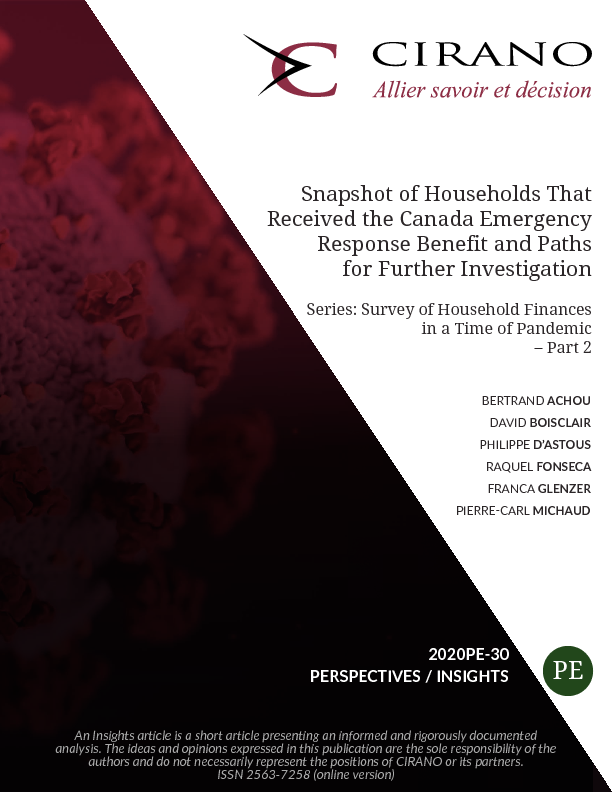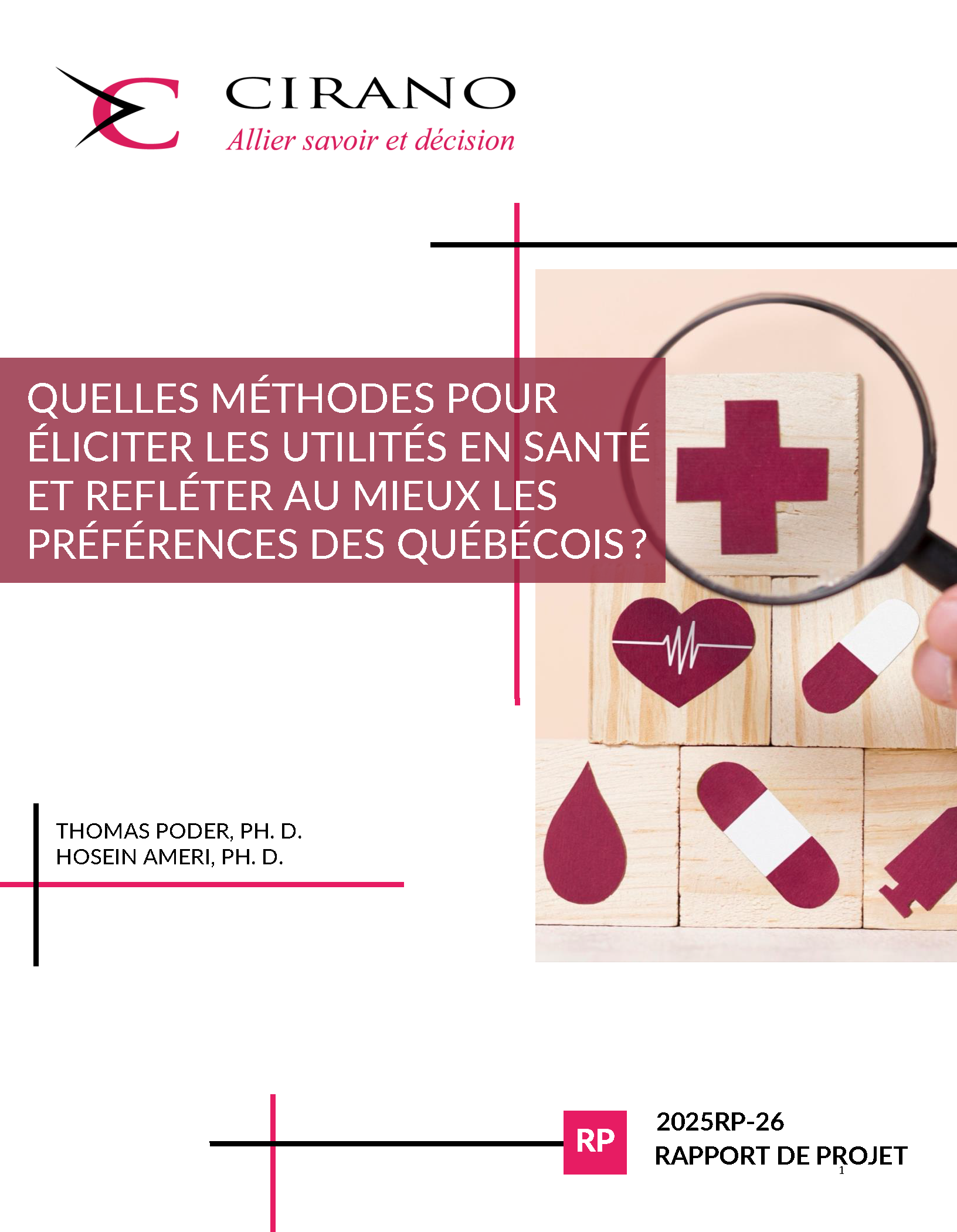Snapshot of Households That Received the Canada Emergency Response Benefit and Paths for Further Investigation
Series: Survey of Household Finances in a Time of Pandemic – Part 2
At the beginning of the pandemic many households hit a wall. In Quebec, over 21 per cent of them experienced job loss.[1] To deal with this situation the Government of Canada reacted rapidly by setting up an emergency fund (the Canada Emergency Response Benefit) that had to be delivered on very short notice. We learned from conversations with government sources that the employment insurance program would have been unable to handle this volume of demand in such a short time. Targeted tax measures would have been difficult to implement because, with few exceptions, the tax system is based on an information cycle that is annual, not monthly or even weekly. It would have been challenging to implement more complicated income- or asset-based criteria including claw-back provisions, etc. This gave rise to a program that issued cheques to over eight million Canadians who applied under very flexible conditions.
As we enter the recovery phase we perceive a need to better understand the impact this assistance has had on households. To that end, we have chosen to sketch an overview of CERB recipient households by incorporating several questions to into the Survey of Household Finances in a Time of Pandemic, jointly conducted by the Retirement and Savings Institute, the Research Chair in Intergenerational Economics, and CIRANO.
[1] For an overview of the impacts of the pandemic on personal finances, the reader is encouraged to consult the first of our series of Notes on the survey: http://cirano.qc.ca/en/summaries/2020PE-25.




